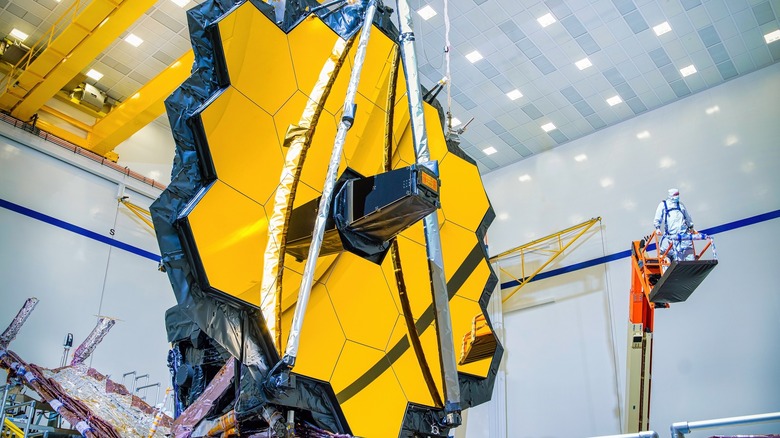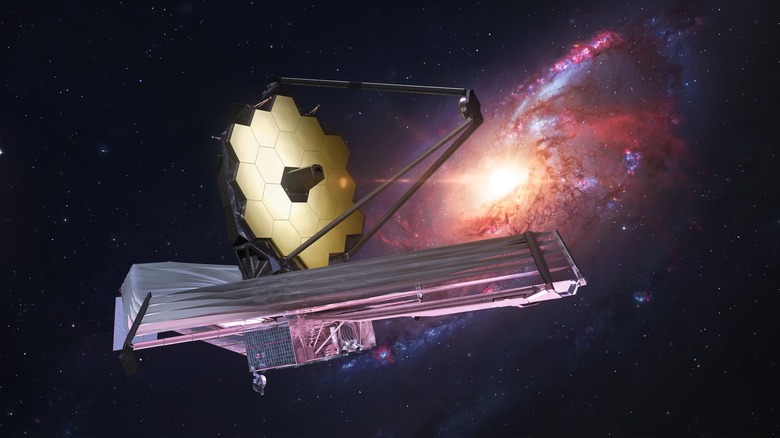The Reason The James Webb Space Telescope Doesn't Have Any Cameras Onboard
When NASA's Perseverance rover landed on Mars in February 2021, we were treated to stunning images of the rover being lowered onto the planet's surface. In the days following the landing, NASA even released video footage showing the rover touching down on Mars. The public loved seeing images of this space achievement up close, and it was managed using small engineering cameras placed all over the rover's Entry, Descent and Landing system (via Space Science Reviews). However, when the James Webb Space Telescope was launched in December 2022, there weren't any images or videos available of the telescope traveling through space and unfurling as it went. So you might wonder: why not? Why weren't there any extra cameras on board James Webb?
James Webb does have science cameras, like its Near Infrared Camera (NIRCam) instrument which will collect highly detailed infrared images of the universe. But it doesn't have any deployment cameras like those Perseverance had on its landing system. And the basic reason for that is the environment in which the telescope operates.
As shared by space.com, Julie Van Campen, deputy commissioning manager for the James Webb Space Telescope at NASA's Goddard Space Center in Maryland, talked in a press conference in January 2022 about why Webb doesn't have extra cameras. Firstly, there was the practical problem that when Webb was being first designed and developed, there weren't many small, rugged and affordable cameras available like there are now. Trying to find a camera which could withstand the harsh conditions of space, like the very cold temperatures, would have been a challenge.
In the cold of space, "Plastics fall apart," Van Campen said, "they shrink and crack glues ... to make something that would work in the cryogenic temperatures on the cold side of the sunshield will take a lot of engineering and design."
The darkness of space
The other problem is one of light. Even if there had been cameras available that could withstand the cold, there was a risk they would interfere with Webb's extremely sensitive instruments. Having to add lights to illuminate the telescope in the dark of space would be potentially hazardous to the delicate instruments. "We would need some kind of light system on a camera system," said Van Campen. "We would have problems if we wanted to do flash photography, obviously. Our mirrors are very sensitive. Our optics inside are very sensitive, and most importantly, [so are] our detectors all the way deep inside of our instruments."
Webb is designed so that only one side of it faces the sun – the side which is protected by the telescope's giant sunshield. That side of the telescope is very shiny so any camera there would have to deal with serious glare issues. On the other side, the telescope is in the dark.
Finally, one last issue is to do with the way Webb had to unfurl. The telescope was folded up to fit inside a rocket for its launch, then it had to be carefully deployed while it was in space. That meant that many parts of it had to move around, so cameras could have gotten in the way.
"Adding cameras to watch an unprecedently complicated deployment of such a precious spacecraft as Webb sounds like a no-brainer, but in Webb's case, there's much more to it than meets the eye," said Paul Geithner, deputy project manager – technical for the Webb telescope at NASA's Goddard Space Flight Center. "It's not as straightforward as adding a doorbell cam or even a rocket cam."

